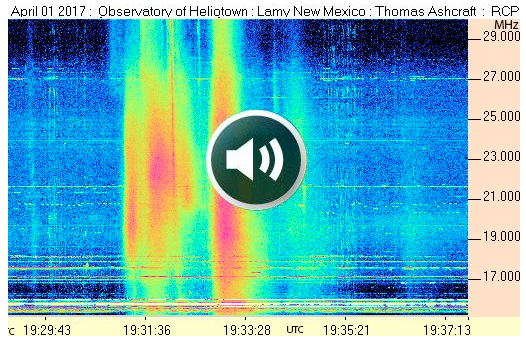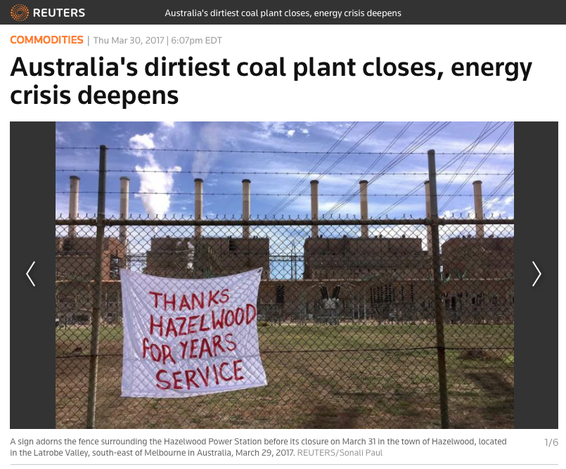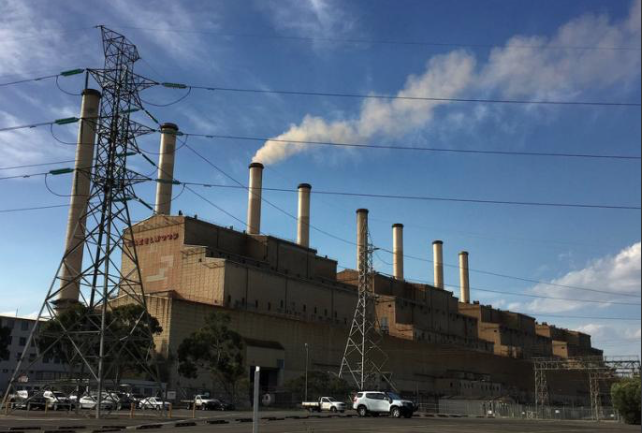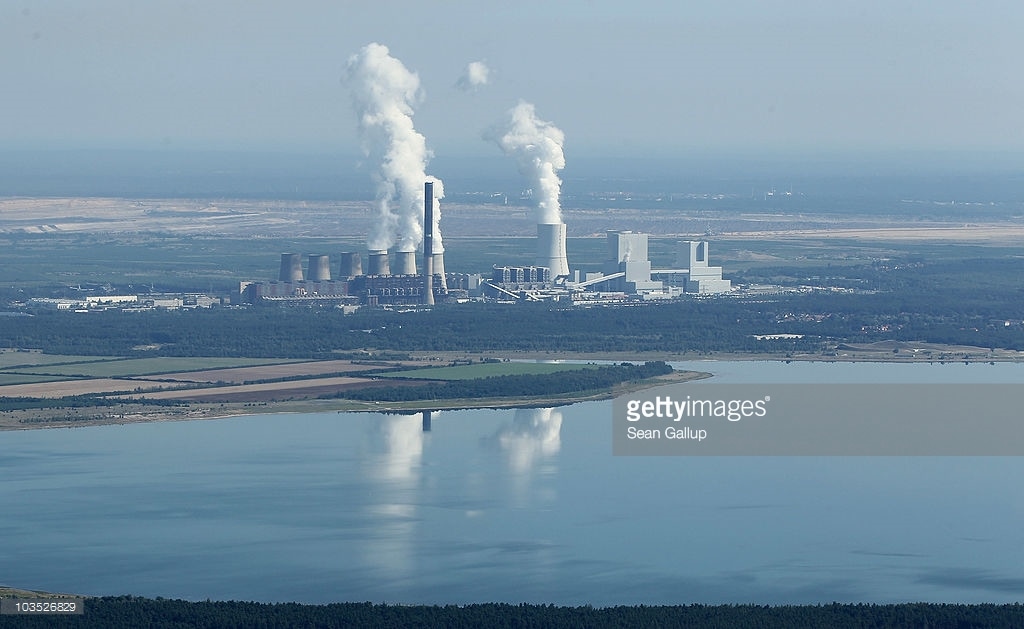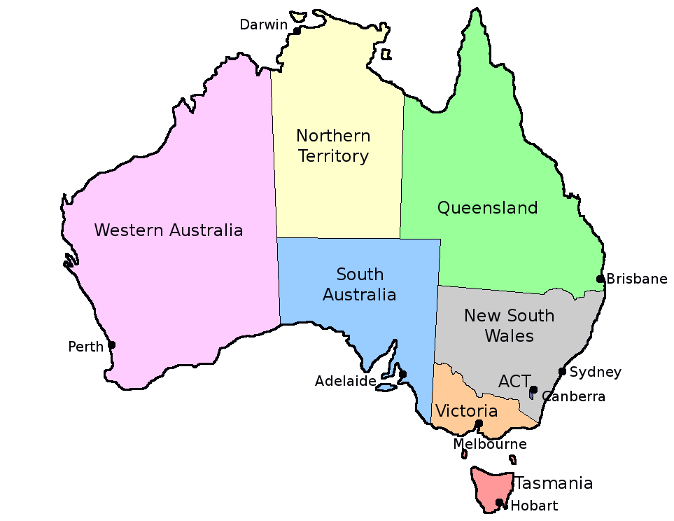|
โลกเกิดมา เติบโต ดำรงอยู่ ยั่งยืน เพราะพลังงานจากดวงอาทิตย์ อันเป็นพลังงานนิวเคลียร์ พลังงานอย่างอื่นที่สะสมอยู่บนโลกมนุษย์ล้วนแต่เป็นผลพวงของพลังงานนิวเคลียร์จากดวงอาทิตย์ทั้งสิ้น ดวงอาทิตย์ผู้ให้กำเนิดโลก ปัจจุบันมีอายุประมาณ 4,500 ล้านปี ให้พลังงานแก่โลกในระดับปานกลาง ประมาณว่าพลังงานนิวเคลียร์ที่ให้ชีวิตแก่โลกจะดับมอดหมดสิ้นแสงและแรงร้อนลงในราวอีก 4,500 -4,800 ล้านปีข้างหน้า ถึงเวลานั้นโลกมนุษย์ก็จะดับตามไปด้วย เพราะขาดแสงสว่างและความอบอุ่นจากดวงอาทิตย์ สิ่งมีชีวิตจะหยุดสังเคราะห์แสง หมดหนทางแปลงพลังงานจากดวงอาทิคย์สานต่อห่วงโซ่อาหาร แต่เฉพาะวันนี้ วันที่โลกยังมีพลังงานให้เลือกใช้อยู่ การถกเถียงเรื่องมนุษย์ควรใช้พลังงานแบบไหนอย่างไรดูว่าจะคึกคักเข้มข้นและรุนแรงมากขึ้นเรื่อยๆ แต่ในที่สุดปัญหาเรื่องพลังงานเพื่อตามยั่งยืนของชีวิตก็จะถึงเวลายุติตามการดับสูญของดวงอาทิตย์ไปด้วย
(ภาพจาก NASA: ดวงอาทิตย์วันที่ 2 เมษายน 2560 วันที่ดวงอาทิตย์ปล่อยเปลวสุริยะ หรือ solar flares ออกมามากผิดปรกติ ต่อเนื่องจากวันที่ 1 และคาดว่าจะต่อไปถึงวันที่ 3 เมษายน อ้างอิง www.spaceweather.com) |

First coal-free day in Britain since Industrial Revolution
Britain went a full day without using coal to generate electricity for the first time since the Industrial Revolution, the National Grid says. The energy provider said Friday's lack of coal usage was a "watershed" moment. Britain's longest continuous energy period without coal until now was 19 hours - first achieved last May, and again on Thursday. The government plans to phase out Britain's last plants by 2025 in order to cut carbon emissions. Friday is thought to be the first time the nation has not used coal to generate electricity since the world's first centralised public coal-fired generator opened in 1882, at Holborn Viaduct in London. Cordi O'Hara of the National Grid said: "To have the first working day without coal since the start of the industrial revolution is a watershed moment in how our energy system is changing. "The UK benefits from highly diverse and flexible sources of electricity. Our energy mix continues to change and National Grid adapts system operation to embrace these changes." But Ms O'Hara says that while the country makes the transition to a low carbon system, coal remains an important source of energy. According to Gridwatch.co.uk, around half of British energy on Friday came from natural gas, with about a quarter coming from nuclear plants. Wind, biomass, and imported energy were also used. Analysis By John Moylan, BBC industry correspondent Coal has powered Britain for more than a century. But Friday's landmark moment - the first 24 hour period without any coal powered generation - is a sign of how the once mighty fuel is being consigned to history. Part of the reason is that solar panels and wind turbines now provide much more electricity to factories and homes. Lower power demand is a factor too - that's normal on a Friday. And as older, uneconomic coal fired plants have closed in recent years, the fossil fuel has been playing a much smaller role in our energy system. The last deep coal mine in the UK, Kellingley Colliery in North Yorkshire, closed in December 2015, bringing to an end centuries of deep coal mining in Britain. Hannah Martin, from Greenpeace UK, said: "A decade ago, a day without coal would have been unimaginable, and in 10 years' time our energy system will have radically transformed again." Coal remained a dominant part of the energy supply until the 1990s, but its use has fallen in recent years, as plants closed or switched to burning biomass such as wood pellets. It accounted for just 9% of electricity generation in 2016 - down from 23% the year before. However, there have been claims that using wood pellets to generate electricity is actually speeding up, not slowing down, climate warming. A study published by Chatham House in February said wood is not carbon neutral and emissions from pellets are higher than coal, making pellet use a flawed policy. The energy industry rejected the report, saying that wood energy cuts carbon significantly compared with fossil fuels.
Reference: BBC News |
21 เมษายน 2017 วันหยุดถ่านหิน
อังกฤษงดใช้ถ่านหินผลิตกระแสไฟฟ้า 1 วันเต็ม สหราชอาณาจักร หรือประเทศอังกฤษทดลองหยุดโรงไฟฟ้าพลังถ่านหินได้เต็ม 24 ชั่วโมงเมื่อวันศุกร์ที่ 21 เมษายน 2017 หลังจากเคยลองหยุดมาแล้วสองครั้งก่อนหน้านี้ โดยหยุดได้ 19 ชั่วโมงเมื่อเดือนพฤษภาคมปีที่แล้ว (2016) และเมื่อวันพฤหัสบดีที่ 20 เมษายนก่อนหน้าที่จะหยุดได้ 24 ชั่วโมงในวันถัดมา ระหว่างที่หยุดโรงไฟฟ้าถ่านหินอังกฤษใช้ไฟฟ้าทดแทนจากโรงไฟฟ้าพลังนิวเคลียร์และก๊าซธรรมชาติ อังกฤษกำหนดยุติการผลิตกระแสไฟฟ้าด้วยพลังถ่านหินทั้งหมดทุกโรงภายในปี 2025 เพราะเห็นว่าการใช้ถ่านหินก่อให้เกิดก๊าซเรือนกระจกเร่งปัญหาการปล่อยก๊าซคาร์บอนไดอ๊อกไซด์ ส่งผลกระทบต่อสภาวะโลกร้อน อังกฤษใช้ถ่านหินผลิตกระแสไฟฟ้ามาตั้งแต่ปี 1882 และปิดเหมืองถ่านหินแบบเหมืองลึกเหมืองสุดท้ายที่ Kellingley Colliery, North Yorkshire เมื่อเดือนธันวาคม 2015 ปัจจุบันอังกฤษสามารถผลิตกระแสไฟฟ้าโดยใช้พลังงานสะอาดจากธรรมชาติมาช่วยเสริมทดแทนได้มาก จากแสงอาทิตย์ ลม และชีวมวล แต่กระนั้นก็ยังต้องพึ่งพลังงานจากโรงไฟฟ้านิวเคลียร์ 25% อีก 50% จากก๊าซธรรมชาติ ถ่านหินมีบทบาทสำคัญในการผลิตกระแสไฟฟ้าในอังกฤษจากอดีตจนถึงปี 1990 จากนั้นก็เริ่มลดความสำคัญ โดยผลิตกระแสไฟฟ้าเพียง 9% ในปี 2016 ลดจากเดิมที่เคยอยู่ที่ 23% ในปี 2015 ข้อมูลวิจัยรายงานว่าแม้บางแห่งจะใช้ฟืนหรือสะเก็ดไม้มาช่วยเสริมในการผลิตไฟฟ้า แต่มลภาวะจากฟืนก็มากพอๆกับที่เกิดจากถ่านหิน. อ้างอิง BBC News |
|
ONE CME - Coronal Mass Ejection - WILL MISS EARTH: On April 1st and 2nd, active sunspot AR2644 propelled two CMEs into space following M4.4 and M5-class solar flares. The first cloud will miss Earth. The second ... stay tuned. NOAA analysts are waiting for more imagery to determine the trajectory of the second cloud.
THE SUN WAKES UP: Suddenly, solar flare activity is high. With little warning, sunspot AR2644 exploded on April 1st, producing an M4.4-class flare. That was the strongest solar flare of the year--for less than a day. The sunspot topped itself on April 2nd with a pair of M5-class explosions. This picture from NASA's Solar Dynamics Observatory shows one of them hurling a plume of hot plasma into space: Flashes of UV radiation from these flares have been ionizing Earth's upper atmosphere and altering the normal propagation of radio waves around our planet. There have been at least three significant shortwave radio blackouts affecting regions around the Pacific and Indian oceans. (Blackout maps: #1, #2, #3) People who might have noticed these blackouts include ham radio operators and mariners using low-frequency rigs for communication at frequencies below 10 MHz.
As April 2nd comes to a close, AR2644 appears set to continue flaring. In fact, an X-flare could be in the offing. Reference Note: The Classification of X-ray Solar Flares or "Solar Flare Alphabet Soup" A solar flare is an explosion on the Sun that happens when energy stored in twisted magnetic fields (usually above sunspots) is suddenly released. Flares produce a burst of radiation across the electromagnetic spectrum, from radio waves to x-rays and gamma-rays. [more information] Scientists classify solar flares according to their x-ray brightness in the wavelength range 1 to 8 Angstroms. There are 3 categories: X-class flares are big; they are major events that can trigger planet-wide radio blackouts and long-lasting radiation storms. M-class flares are medium-sized; they can cause brief radio blackouts that affect Earth's polar regions. Minor radiation storms sometimes follow an M-class flare. Compared to X- and M-class events, C-class flares are small with few noticeable consequences here on Earth. SOLAR RADIO BURSTS: Yesterday's M4.4 solar flare from sunspot AR2644 flare caused a shortwave radio blackout. It also produced the opposite--a loud burst of radio static. In rural New Mexico, amateur radio astronomer Thomas Ashcraft recorded the hiss and crackle emerging from the loudspeaker of his receiver. Click to listen:
"The solar flare generated very strong emissions and nearly saturated my radio telescope," says Ashcraft. " The sound file was recorded at 21 MHz and it has three peaks."
Solar radio bursts are caused by solar flares. Electrons accelerated by strong flares race through the sun's atmosphere, causing a ripple of plasma waves and radio static. Astronomers classify solar radio bursts into five types; Ashcraft's recording captured a mixture of Type III and Type V. "I had been thinking that I might not be receiving any more strong solar storms this cycle," says Ashcraft, "but am thrilled to receive this activity. And there might be more to come if AR2644 continues to flare." Reference: Spaceweather.com by NASA |
ดวงอาทิตย์ วันที่ 1-2 เมษายน 2017/2560
ระเบิดจ้า solar flares หรือ พายุสุริยะ ส่ง CME (Coronal Mass Ejection) ออกมามากผิดปรกติ ระหว่างวันที่ 1-2 เมษายน 2560 องค์การบริหารการบินและอวกาศแห่งชาติสหรัฐอเมริกา (NASA) ตรวจพบความรุนแรงผิดปรกติของเปลวพายุสุริยะ (solar flares) ที่พวยพุ่งออกมาบริเวณต่างๆรอบๆพื้นผิว เปลวสุริยะที่พุ่งออกมาเรียกว่า Coronal Mass Ejection - CME ซึ่งสำนักงานสภาวะอวกาศ (space weather) บอกว่า CME จะพุ่งออกมาแรงมากผิดปรกติ แต่ CME มวล (cloud) แรก จะมีทิศทางไม่ตรงโลก หากตรงก็จะเกิดปรากฏการณ์กระทบสนามแม่เหล็ก ส่งผลกระทบระบบสื่อสารโทรคมนาคมที่มนุษย์บริหารจัดการอยู่บนพื้นผิวโลก ขณะนี้ ดาวเทียม NOAA กำลังเก็บข้อมูล CME มวล (cloud) ที่สองที่กำลังตามมาว่าจะพุ่งตรงเข้าชนชั้นบรรยากาศรอบโลกหรือไม่ ส่วนระเบิดเปลวสุริยะ (solar flare) ที่ออกมามากและแรงผิดปรกตินั้น จัดอยู่ในระดับ M4.4 และ M5 ดูจากภาพจะเห็นเปลว plasma ร้อนแรง พวยพุ่งออกมาตรงจุดระบิดบนดวงอาทิตย์ (sunspot) ด้านขวา เปลวสุริยะนี้เองที่เรียกว่า CME ปรากฏการณ์บนดวงอาทิตย์เป็นปรากฏการณ์ทางธรรมชาติในระบบสุริยะ ซึ่งเป็นส่วนหนึ่งของ galaxy ซึ่งรวมกับอีกหลายแสนล้าน galaxies รวมเป็นเอกภพ (universe) เอกภพนั้นในอดีตภาษาไทยใช้คำว่า "จักรวาล" หมายถึงอาณาจักรอันไพศาลของดวงดาว แต่นักวิทยาศาสตร์เห็นพ้องกันว่ามีอาณาจักรแห่งดวงดาวอาณาจักรเดียวจึงใช้คำว่า "Universe" หรือ "เอกภพ" มาถึงวันนี้เสียงนักวิทยาศาสตร์เริ่มแตกเป็นสองกลุ่ม โดยมีกลุ่มใหม่คิดว่าเอกภพมีมากกว่าหนึ่ง จึงเกิดคำว่า "multiverse" ภาษาไทยน่าจะกลับไปใช้คำว่า "จักรวาล" ตามเดิม โดยให้หมายถึง 'multiverse" อธิบายความต่อได้ว่าใน "จักรวาล" มีหลาย "เอกภพ" เข้าใจดั่งนี้แล้ว ปัจเจกชนก็สิ้นความสำคัญ. |
ปิดโรงไฟฟ้าพลังถ่านหิน Hazelwood ที่ Australia
เพราะต้นทุนเทคโนโลยี และ ต้นทุนการผลิตสูง? หรือเพราะใช้ถ่านหิน?
เพราะต้นทุนเทคโนโลยี และ ต้นทุนการผลิตสูง? หรือเพราะใช้ถ่านหิน?

COMMODITIES | Thu Mar 30, 2017 | 6:07pm EDT
Australia's dirtiest coal plant closes, energy crisis deepens By Sonali Paul | HAZELWOOD, AUSTRALIA The doors to Australia's dirtiest power station will close permanently on Friday after 50 years, amping up pressure on a government desperate to avoid the kind of embarrassing blackouts that hit chunks of the country during a recent savage heatwave. France's Engie SA is pulling the plug on the Hazelwood coal-fired power plant near Melbourne, cutting around a fifth of the state of Victoria's energy supply, blaming the "huge" costs of running the aged facility amid rising competition from subsidized wind and solar energy. With other shutdowns of fossil fuel stations potentially following down the line, the move highlights the challenges facing Canberra as it fights to balance long-term green ambitions with the need to provide affordable power. "If the lights go out, it would be nasty," said Tony Wood, energy program director at independent think tank the Grattan Institute. "There's just such a level of political and community concern that (politicians) should be nervous." Growth in electricity demand and a drop in supply since 2014 have strained the Australian grid. South Australia was roiled by a state-wide blackout last September, which crippled industry for up to two weeks, while the eastern states suffered six power cuts over the past summer. "The government continues to carefully monitor this situation," Energy Minister Josh Frydenberg told Reuters in an email. The nation's energy market operator has said there is enough unused capacity at existing power stations and mothballed capacity that could reopen to replace the 1,600 megawatts that Hazelwood is shutting. It is in talks to get mothballed gas-fired plants to restart. LOVE, HATE Hazelwood has long been symbolic of Australia's love-hate relationship with coal, attracting a major protest in near freezing conditions in 2009 that erupted into violent clashes. It has been labelled the country's dirtiest power station as it emits more greenhouse gas per unit of electricity than any other plant. On Wednesday, as the facility shut the last of its eight generators, workers leaving for the last time hung their hard hats on a fence, with a handful taking photos of the final blasts of steam coming out of the 'stack'. "It feels terrible. Everyone thought it would be a partial closure. No one ever thought it would be a full closure," said Scott Meadows, who has worked at the site for 36 years. Prime Minister Malcolm Turnbull fought off last-minute lobbying from industry and right wing politicians to step in to rescue Hazelwood to secure power and save 750 jobs in an already economically depressed region. "At the very least they should have closed it in stages over two years. They're just walking away," said Tony Maher, president of the mining and energy division of the Construction, Forestry, Mining and Energy Union (CFMEU). Engie was not asked by the federal or state governments to postpone Hazelwood's closure, even after the string of blackouts across the eastern states over the past summer, said Engie's head of corporate affairs, Jim Kouts. The spotlight is now shifting to EnergyAustralia, owned by Hong Kong's CLP Holdings, which runs another aged coal-fired plant in Victoria, at Yallourn. EnergyAustralia said it has enough coal reserves to last until 2032 and has plans to run through until that time, but has not ruled out closing before then. "Of course, we acknowledge policy and market settings may change, but whatever we do we will not sacrifice the affordability and reliability of our customers' energy supply," said an EnergyAustralia spokeswoman. The CFMEU's Maher and industry experts predict that Yallourn will not shut any time soon as its profits are likely to rise following the closure of Hazelwood. In Victoria, daily wholesale power prices surged to A$47.90 ($36.70) per megawatt hour (MWh) in the first quarter from an average since 2000 of A$29.60. "(Yallourn's) prospects of staying open longer strengthened the day Hazelwood's closure was announced," Maher said. (Reporting by Sonali Paul; Editing by Joseph Radford) Reference: Reuters |
นับจากปี 2014 เป็นต้นมา ความต้องการพลังงานสูงขึ้น ขณะที่การผลิตพลังงานกลับลดลงในเชิงปริมาณ ทำให้เป็นแรงกดดันมากต่อสถานีไฟฟ้าของการไฟฟ้าฝ่ายผลิตต่างๆในการส่งกระแสไฟฟ้าให้ประชาชนใช้อย่างพอเพียง โดยไม่ให้เกิดไฟดับ
รัฐ South Australia เคยเกิดไฟฟ้าดับ เป็นวิกฤติต่อโรงงานอุตสาหกรรมนานถึงสองสัปดาห์ ส่วนรัฐอื่นๆทางตะวันออกในหน้าร้อนที่แล้วจำเป็นต้องลดปริมาณการส่งกระแสไฟฟ้าถึง 6 ครั้ง, Josh Frydenberg รัฐมนตรีพลังงานกล่าวต่อสำนักข่าว Reuters ทาง email ว่ารัฐบาลกำลังเฝ้าระวังสถานการณ์นี้อย่างใกล้ชิด
วงการตลาดพลังงานบอกว่าที่จริงแล้วยังมีโรงไฟฟ้าอื่นๆที่ไม่ได้ผลิตกระแสไฟฟ้าเต็มที่ และโรงไฟฟ้าแบบเก่าอีกหลายแห่งที่สามารถเพิ่มปริมาณการผลิตให้ได้พอทดแทนจากที่หายไปจากการปิดโรงไฟฟ้าถ่านหินที่ Hazelwood ได้ ซึ่งเวลานี้กำลังมีการเจรจากับโรงไฟฟ้าพลังงานความร้อนจากก๊าซธรรมชาติบางแห่งอยู่ โรงไฟฟ้าถ่านหิน Hazelwood เป็นโรงไฟฟ้าที่เป็นทั้งที่รักและที่ชังของชาวบ้านเพราะใช้พลังงานถ่านหินที่มักมีความเห็นกันว่าเป็นแหล่งกำเนิดพลังงานไม่สะอาด สร้างมลภาวะในอากาศ ทำให้โรงไฟฟ้า Hazelwood ถูกเรียกว่าเป็นโรงไฟฟ้าที่สกปรกที่สุดในประเทศ Australia เพราะสร้างก๊าซเรือนกระจก (greenhouse gas) ในสัดส่วนส่วนสูงสุดต่อหน่วยพลังงาน แต่ก็มีข้อดีที่ใช้ถ่านหินที่เป็นทรัพยากรธรรมชาติอันมีมากมายมหาศาลในประเทศ และแถมยังส่งเป็นสินค้าออกไปยังประเทศอื่นที่ใช้ถ่านหินผลิตกระแสไฟฟ้า โรงไฟฟ้าถ่านหิน Hazelwood จึงทำให้ประชาชนมีไฟฟ้าใช้อย่างพอเพียงในราคาไม่แพง ส่วนฝ่ายที่ต่อต้านถ่านหินก็จัดการชุมนุมประท้วงครั้งใหญ่ในปี 2009 จนเกิดการปะทะกันรุนแรงกับฝ่ายที่สนับสนุนการใช้ถ่านหิน ในที่สุดโรงไฟฟ้า Hazelwood ก็ต้องปิดเครื่องกำเนิดกระแสไฟฟ้าเครื่องที่ แปด-เครื่องสุดท้าย ในวันพุธที่ 29 มีนาคม 2017 เป็นการปิดโรงไฟฟ้าอย่างถาวร แทนที่จะเป็นการปิดเพียงบางส่วนอย่างที่เชื่อกันก่อนหน้านี้ว่าน่าจะค่อยๆปิดที่ละขั้นตอนในเวลาสองปี แต่ก็ต้องผิดหวัง การปิดตัวครั้งนี้ทำให้พนักงานตกงาน 750 คน อย่างไรก็ตามรัฐบาล Australia ก็มิได้เข้าแทรกแซงใดๆ มิได้ขอร้องให้มีการชะลอการปิดใดๆทั้งสิ้น ได้แต่ "เฝ้าดูสถานการณ์อย่างใกล้ชิด" เท่านั้น ยังมีโรงไฟฟ้าพลังถ่านหินอีกแห่งหนึ่งที่กำลังถูกจับตามองว่าจะเป็นรายต่อไปที่จะต้องปิด คือโรงไฟฟ้าที่เมือง Yallourn รัฐ Victoria เช่นกัน เป็นของบริษัท EnergyAustralia ซึ่งเป็นกิจการในเครือบริษัทฮ่องกงชื่อ CLP Holdings โรงไฟฟ้า Yallourn ยืนยันว่ามีถ่านหินมากพอที่จะใช้ผลิตกระแสไฟฟ้าไปอีก 15 ปี จนถึงปี 2032 แต่ก็มิได้ให้หลักประกันว่าจะไม่ปิดตัวลงก่อนกำหนดด้วยเหตุอื่น ข่าวจาก Australia โดยสำนักข่าว Reuters ข่าวนี้ สรุป และ ให้ความเห็นเพิ่มเติมได้ดังนี้: 1. มีการปิดโรงไฟฟ้าพลังถ่านหินด้วยเหตุผลทางเศรษฐกิจเกี่ยวกับต้นทุนการบริหารจัดการโรงงานที่เก่ามาก ซึ่งหมายความว่าจะต้องใช้ทุนสูงในการควบคุมมลภาวะจากถ่านหินให้ได้มาตรฐานที่รับได้ แต่กระนั้นก็ยังพบว่ายังคงเป็นโรงงานที่มีสัดส่วนก๊าซเรือนกระจกต่อหน่วยพลังงานที่ผลิตสูงกว่าที่อื่น เมื่อต้นทุนสูง การดำเนินงานขาดทุน ก็ต้องหยุดกิจการ 2. จากเหตุผลข้างบน ยังไม่พบว่าโรงไฟฟ้า Hazelwood ส่งผลกระทบเสียหายต่อสิ่งแวดล้อมถึงมาตรฐานกลาง หมายความว่าหากจะยอมขาดทุน ใช้ถ่านหินเป็นเชื้อเพลิงต่อไปก็ย่อมได้ ไม่มีปัญหากับรัฐบาลทั้งของรัฐ Victoria และรัฐบาลกลางที่กรุง Canberra 3. การใช้เทคโนโลยีใหม่เพื่อใช้ถ่านหินเป็นเชื้อเพลิงผลิตกระแสไฟฟ้า ทำให้เกิดโรงไฟฟ้าสะอาด ได้มาตรฐานสากลในปัจจุบันนี้ ทำได้ และมีที่ทำอยู่ในบางประเทศ รวมทั้งใน Australia เอง แต่จะทำให้ต้นทุนสูงมากจนดำเนินการต่อไปไม่ได้ โดยเฉพาะในเมื่อรัฐบาลให้เงินอุดหนุนการผลิตพลังงานทดแทนจากธรรมชาติ เช่น ลม และ แสงอาทิตย์ ทั้งนี้ก็เป็นนโยบายพลังงานสะอาดที่ปรกติจะแพง แต่รัฐให้เงินอุดหนุนจนราคาถูกกว่าไฟฟ้าจากถ่านหิน ก็หมายความว่าเป็นการหมดอนาคตของถ่านหินในการผลิตกระแสไฟฟ้าใน Australia 4. ด้วยเหตุนี้รัฐบาล Australia จึงผลักดันการขายถ่านหินให้กับประเทศอื่นที่กำลังพัฒนาและประชาชนกับรัฐบาลยังไม่เห็นปัญหามลภาวะจากถ่านหินเป็นเรื่องสำคัญนัก หรือไม่ก็เป็นประเทศที่มีความพร้อมในการลงทุนสร้างโรงงานผลิตกระแสไฟฟ้าพลังถ่านหินที่ใช้เทคโนโลยีระดับสูงล่าสุดในการควบคุมก๊าซเรือนกระจกจากเชื้อเพลิงถ่านหิน 5. ณ วันนี้ ปัญหาเรื่องโรงไฟฟ้าที่ใช้พลังงงานจากถ่านหินจึงเป็นเรื่องของเทคโนโลยีพลังงานสะอาดจากถ่านหิน กับราคาค่าลงทุนในเทคโนโลยีนั้น มากกว่าที่จะไปโทษความไม่สะอาดของตัวถ่านหินเอง 6. ใน Germany มีโรงไฟฟ้าที่ใช้พลังงานจากถ่านหินอยู่ เพราะอยู่ใกล้แหล่งเหมืองถ่านหินปริมาณมหาศาล แต่โรงไฟฟ้าถ่านหินของ Germany ก็สะอาด เพราะใช้เทคโนโลยีสูงพอ ไม่มีปัญหาการคัดค้านจากชุมชนเพราะตั้งอยู่ในที่ที่กำหนดระยะห่างจากชุมชนตามมาตรฐาน โรงไฟฟ้าพลังถ่านหินของ Germany มีทั้งหมด 52 แห่ง เป็นแบบใช้ถ่านหินธรรมดา (coal) 37 แห่ง และ ใช้ถ่านหิน lignite 15 แห่ง ทุกแห่งยังคงดำเนินการผลิตกระแสไฟฟ้าต่อไป จนกว่าจะถึงเวลาปิด เมื่อนโยบายพลังงานสะอาดเข้ามาแทนที่ได้ ตามตารางการผลิตพลังงานของประเทศ ซึ่งในระยะยาวจะทะยอยปิดโรงไฟฟ้านิวเคลียร์และโรงไฟฟ้าที่ใช้พลังงานจากซากฟอสซิลทั้งหลาย คือ น้ำมัน ก๊าซธรรมชาติ และ ถ่านหิน ซึ่งแม้จะเป็นนโยบายที่มุ่งมั่น แต่ก็จะเป็นการดำเนินงานแบบค่อยๆทะยอยทำตามแผนที่วางไว้และอุปสรรคที่เผชิญอยู่ 7. บทเรียนสำหรับประเทศไทยก็คือ เมื่อการใช้ไฟฟ้าสูงขึ้น และพลังงานจากก๊าซธรรมชาติ และนำ้มันมีไม่เพียงพอ หากประชาชนไม่ลดการใช้พลังงานลง ก็มีความจำเป็นที่จะต้องสร้างโรงไฟฟ้ามากขึ้น จะใช้ไฟฟ้ากันมากขึ้นโดยไม่ผลิตกระแสไฟฟ้ามากขึ้นนั้น เป็นไปไม่ได้ ทางเลือกก็คือการสร้างโรงไฟฟ้าพลังงานถ่านหิน และ โรงไฟฟ้านิวเคลียร์ โดยสามารถทำได้โดยการลงทุนทางเทคโนโลยีให้สูงสุดเท่าที่โลกมีให้ใช้อยู่ในปัจจุบันและอนาคต นอกจากเทคโนโลยีที่มีให้เลือกใช้แล้ว ก็เป็นเรื่องการกำหนดสถานที่สร้างโรงไฟฟ้าดังกล่าว โดยคำนึงถึงระยะห่างจากชุมชนที่ไม่ส่งผลกระทบต่อสิ่งแวดล้อมชุมชน และระบบนิเวศในธรรมชาติทั้งทางบกและทางทะเล โดยให้ประชาชนมีส่วนร่วมในการศึกษา รับรู้ข้อมูลที่ถูกต้องทางวิชาการ วิทยาศาสตร์ และเทคโนโลยี และการแบ่งปันผลประโยชน์ให้ชุมชน 8. ประเทศไทยสามารถสร้างโรงไฟฟ้าพลังถ่านหิน และ นิวเคลียร์ได้แน่นอน โดยไม่มีผลกระทบต่อสิ่งแวดล้อมเกินมาตรฐานโลก และไม่กระทบวิถีชีวิตชุมชน หากใช้เทคโนโลยีที่ดีที่สุด ซึ่งก็อาจจะแพงที่สุด แต่เราก็จะสามารถมีพลังงานใช้อย่างพอเพียง อาจจะในราคาที่แพงขึ้น แต่จะไม่มีปัญหาการขาดแคลนพลังงาน 9. อีกทางเลือกหนึ่งก็คือ การไม่สร้างโรงไฟฟ้าเพิ่ม แต่ประชาชนทุกคนต้องประหยัดการใช้พลังงาน ใช้เท่าที่จัดการได้เท่านั้น 10. ทั้งสองทางเลือกนั้น ไม่จำเป็นต้องเลือกอย่างใดอย่างหนึ่ง แต่น่าจะเลือกเอาทั้งสองทาง สร้างโรงไฟฟ้านิวเคลียร์ และ โรงไฟฟ้าถ่านหิน โดยใช้เทคโนโลยีที่ดีที่สุดในโลก และให้ประชาชน และภาคอุตสาหกรรม ประหยัดการใช้พลังงาน โดยใช้อย่างพอเพียงและมีประสิทธิภาพ 11. ในระยะยาว ให้มีการพัฒนาพลังงานทางเลือกที่สะอาด เป็นมิตรต่อชีวิตและสิ่งแวดล้อม 2 เมษายน 2560 |
❉ ARCHIVES ❉
|
|







